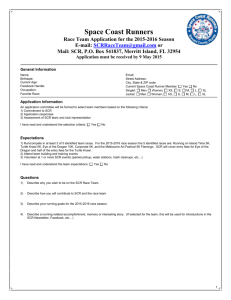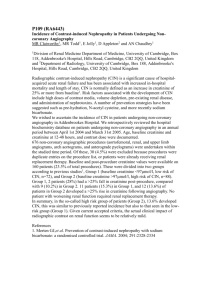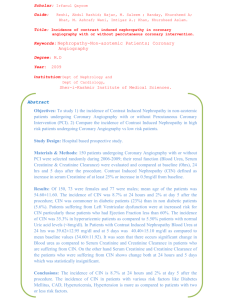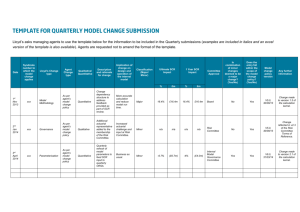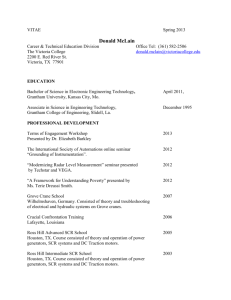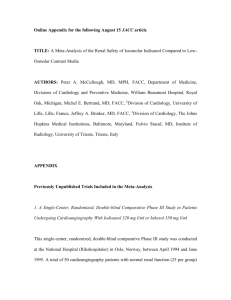comparison of contrast-induced nephrotoxicity
advertisement
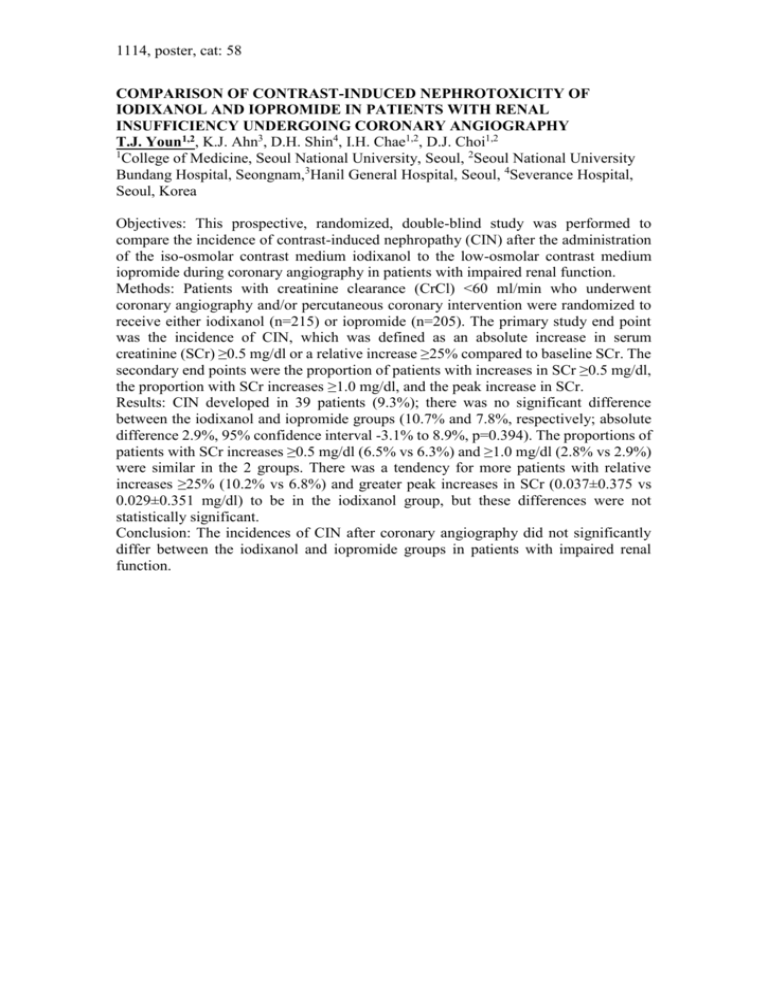
1114, poster, cat: 58 COMPARISON OF CONTRAST-INDUCED NEPHROTOXICITY OF IODIXANOL AND IOPROMIDE IN PATIENTS WITH RENAL INSUFFICIENCY UNDERGOING CORONARY ANGIOGRAPHY T.J. Youn1,2, K.J. Ahn3, D.H. Shin4, I.H. Chae1,2, D.J. Choi1,2 1 College of Medicine, Seoul National University, Seoul, 2Seoul National University Bundang Hospital, Seongnam,3Hanil General Hospital, Seoul, 4Severance Hospital, Seoul, Korea Objectives: This prospective, randomized, double-blind study was performed to compare the incidence of contrast-induced nephropathy (CIN) after the administration of the iso-osmolar contrast medium iodixanol to the low-osmolar contrast medium iopromide during coronary angiography in patients with impaired renal function. Methods: Patients with creatinine clearance (CrCl) <60 ml/min who underwent coronary angiography and/or percutaneous coronary intervention were randomized to receive either iodixanol (n=215) or iopromide (n=205). The primary study end point was the incidence of CIN, which was defined as an absolute increase in serum creatinine (SCr) ≥0.5 mg/dl or a relative increase ≥25% compared to baseline SCr. The secondary end points were the proportion of patients with increases in SCr ≥0.5 mg/dl, the proportion with SCr increases ≥1.0 mg/dl, and the peak increase in SCr. Results: CIN developed in 39 patients (9.3%); there was no significant difference between the iodixanol and iopromide groups (10.7% and 7.8%, respectively; absolute difference 2.9%, 95% confidence interval -3.1% to 8.9%, p=0.394). The proportions of patients with SCr increases ≥0.5 mg/dl (6.5% vs 6.3%) and ≥1.0 mg/dl (2.8% vs 2.9%) were similar in the 2 groups. There was a tendency for more patients with relative increases ≥25% (10.2% vs 6.8%) and greater peak increases in SCr (0.037±0.375 vs 0.029±0.351 mg/dl) to be in the iodixanol group, but these differences were not statistically significant. Conclusion: The incidences of CIN after coronary angiography did not significantly differ between the iodixanol and iopromide groups in patients with impaired renal function.


